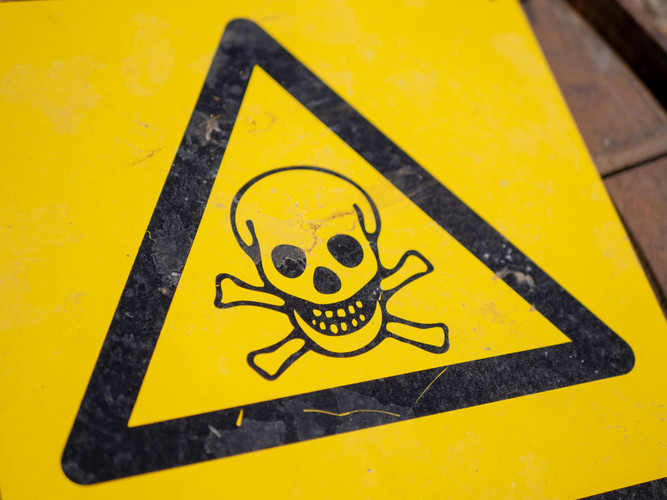Posted by 949 Chemical on Apr 29th 2025
Understanding Chemical Class Labels: A Comprehensive Guide
When shipping laboratory chemicals, safety and compliance are top priorities. Whether you're transporting small reagent bottles or bulk industrial solvents, every package must be properly labeled to indicate the hazards associated with its contents. These labels — known as hazard class labels — help ensure safe handling, transport, and storage of dangerous goods.
In this guide, we’ll break down the chemical class labels that commonly appear on shipping boxes for chemicals, including the meaning of each class, visual identifiers, and key examples.
? Why Chemical Class Labels Matter
Chemical hazard class labels are part of the international regulations enforced by:
-
U.S. Department of Transportation (DOT)
-
United Nations (UN Model Regulations)
-
Occupational Safety and Health Administration (OSHA)
-
International Air Transport Association (IATA)
-
Globally Harmonized System (GHS)
These labels:
-
Alert handlers and transporters to chemical dangers
-
Prevent accidents like spills, fires, or exposure
-
Ensure proper emergency response
-
Comply with legal regulations to avoid fines
? Major Hazard Classes Used in Shipping Chemicals
Chemicals are grouped into 9 hazard classes, each with a specific label design. Below is a breakdown of these classes with visual descriptions and real-world examples:
Class 1: Explosives
Label: Orange background with a bursting ball icon
Subdivisions: 1.1 – 1.6 (based on type and level of hazard)
Description: Materials capable of causing explosions by chemical reaction. Rare in laboratories but may apply to certain reactive metal azides or blasting agents.
Examples:
-
Trinitrotoluene (TNT)
-
Nitroglycerin
-
Some pyrotechnic compounds
Handling Tips:
-
Avoid friction, heat, and impact
-
Use specially approved containers
-
Restricted transport methods
Class 2: Gases
Label Variants:
-
2.1 (Flammable Gas): Red flame symbol
-
2.2 (Non-Flammable, Non-Toxic Gas): Green cylinder symbol
-
2.3 (Toxic Gas): White skull and crossbones
Description: Compressed gases, liquefied gases, dissolved gases, or refrigerated liquefied gases.
Examples:
-
2.1: Propane, Hydrogen
-
2.2: Nitrogen, Helium, Argon
-
2.3: Chlorine gas, Hydrogen sulfide
Handling Tips:
-
Secure cylinders upright
-
Use appropriate regulators
-
Monitor for leaks
Class 3: Flammable Liquids
Label: Red background with a white flame
Description: Liquids with a flash point below 60°C (140°F), which can ignite under normal transport conditions.
Examples:
-
Acetone
-
Ethanol
-
Toluene
-
Methanol
Handling Tips:
-
Keep away from heat, sparks, and flames
-
Use flame-proof storage cabinets
-
Ground containers when dispensing
Class 4: Flammable Solids
Label Variants:
-
4.1: Flammable Solid (Red and white stripes)
-
4.2: Spontaneously Combustible (Red top, white bottom)
-
4.3: Dangerous When Wet (Blue background)
Description:
-
4.1: Solids prone to ignition through friction
-
4.2: Ignite spontaneously in air
-
4.3: React with water to release flammable gas
Examples:
-
4.1: Naphthalene, magnesium powder
-
4.2: White phosphorus
-
4.3: Sodium metal, potassium
Handling Tips:
-
Store in inert atmospheres
-
Avoid exposure to air or water
-
Handle with dry tools
Class 5: Oxidizers and Organic Peroxides
Label Variants:
-
5.1: Oxidizer (Yellow flame over circle)
-
5.2: Organic Peroxide (Half red, half yellow)
Description:
-
Oxidizers release oxygen to support combustion
-
Organic peroxides are thermally unstable and may explode
Examples:
-
5.1: Potassium nitrate, Hydrogen peroxide
-
5.2: Benzoyl peroxide
Handling Tips:
-
Keep away from flammable materials
-
Avoid heat and contamination
-
Store in vented containers
Class 6: Toxic and Infectious Substances
Label Variants:
-
6.1: Toxic substances (White label, skull and crossbones)
-
6.2: Infectious substances (White label with biohazard symbol)
Description:
-
6.1: Can cause death or serious harm by ingestion, inhalation, or skin contact
-
6.2: Contain pathogens
Examples:
-
6.1: Cyanide compounds, arsenic trioxide
-
6.2: Clinical lab specimens, viruses
Handling Tips:
-
Use full PPE (gloves, mask, eye protection)
-
Ensure spill containment
-
Special shipping protocols apply
Class 7: Radioactive Materials
Label: Yellow/white with radiation trefoil symbol
Description: Materials that emit ionizing radiation, measured by activity level.
Examples:
-
Uranium compounds
-
Cobalt-60
-
Iodine-131
Handling Tips:
-
Requires shielding (lead)
-
Limit exposure time
-
Must be transported by licensed carriers
Class 8: Corrosives
Label: Black and white with substance spilling on hand and metal
Description: Substances that cause severe skin burns, destroy living tissue, or corrode metals.
Examples:
-
Hydrochloric acid
-
Sodium hydroxide
-
Sulfuric acid
-
Nitric acid
Handling Tips:
-
Use acid/base resistant gloves and eye protection
-
Avoid skin or inhalation exposure
-
Store in corrosion-proof cabinets
Class 9: Miscellaneous Dangerous Goods
Label: Black and white vertical stripes on top, blank bottom
Description: Hazardous materials not covered by other classes but still pose risks.
Examples:
-
Lithium batteries
-
Dry ice (solid CO₂)
-
Genetically modified organisms
Handling Tips:
-
Check carrier-specific restrictions
-
Use proper packaging
-
Include handling documentation
?️ How to Read a Chemical Shipping Box Label
Each label on a chemical shipping box includes:
-
Hazard class symbol (as described above)
-
UN number (e.g., UN 1993 for flammable liquids)
-
Proper shipping name
-
Packing group (I, II, III) – indicates degree of hazard
-
Handling instructions and precautionary statements
Final Thoughts
Understanding and applying the correct chemical class labels is not just a legal requirement — it’s a crucial part of ensuring safety during chemical transportation. Whether you’re shipping within San Diego or across international borders, proper labeling prevents accidents and keeps your team, partners, and community safe.
At 949 Chemical, we help labs across California stay compliant by providing not only high-purity chemicals but also packaging, labeling, and shipping solutions tailored for hazardous materials.

